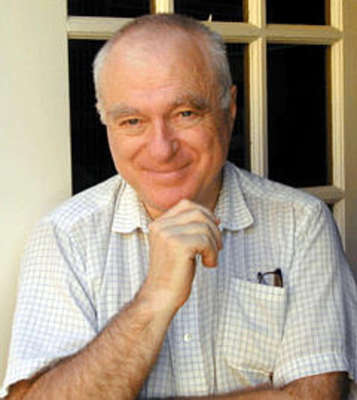| 1959 |
As an engineering student, Hébert landed a summer job
with IBM and programmed in FORTRAN on the first commercial computer in Europe. |
| 1989 |
His first solo-exhibition “Sans lever la plume” was held at the Galerie Alphonse Chave and presented a variety of ink-on-paper drawings made with mechanical plotters. |
| 1970s |
Working as a consultant in Paris with the very first HP lab computers and plotters, Hébert began using computers as tools to create drawings. |
| 2003 |
He was appointed artist in residence a the Kavli Institute for Theoretical Physics at the University of California, Santa Barbara. |
| 2006 |
Hébert was awarded a Pollock-Krasner fellowship. |
| 2008 |
He received the David Bermant Foundation grant. |
| 1989 |
IBM Research Center, Marcel Breuer Building, Lobby Gallery (La Gaude, France).
“Sans lever la plume", Galerie Alphonse Chave (Vence, France). |
| 2000 |
“On Lines” DesignArc Gallery (Santa Barbara, California) |
| 2001 |
“Traces on Sand and Paper”, Computing Commons Gallery, Arizona State University (Tempe, Arizona)
“Prints and Drawings” Department of Art & Art History, curated by Tim High, University of Texas Austin
“Unus Mundus: From the Digital to the Sublime”, El Camino College Art Gallery, with Victor Raphael, Susanna Meiers,
Curator (Los Angeles, California). |
| 2002 |
“Traces on Sand and Paper 2”, Monlleo Gallery (Santa Barbara, CA). |
| 2003 |
“Fields on Paper” Kavli Institute for Theoretical Physics (University of California Santa Barbara)
“Jean-Pierre Hébert & Victor Raphael: Illuminated Collaboration”, Karpeles Manuscript Library and Museum (Santa Barbara, California) |
| 2004 |
“Plotterzeichnungen” Gallery at the Digital Art Museum (Mitte District, Berlin, Germany).
“New Works and Works in the KITP Collection”, Kavli Institute for Theoretical Physics (University of California Santa Barbara) |
| 2005 |
“Jean-Pierre Hébert & David Holt: Expanding Reality”, Barrett Gallery, Santa Monica College (Santa Monica, California) |
| 2006 |
“Drawing for the Next Century”, San Luis Obispo Art Center, (San Luis Obispo, California) |
| 2008 |
“Jean-Pierre Hébert : Drawing With the Mind”, Santa Barbara Contemporary Arts Forum (Santa Barbara, California)
“Improbable Landscapes”, Marcia Burtt Studio (Santa Barbara, California) |
| 2009 |
“Jean-Pierre Hébert : Drawings as Thoughts”, SCIArc Southern California Institute of Architecture (Los Angeles,
California) |
| 2000 |
Fondation La Ferthé/ Fondation de France (Paris), grant. |
| 2003 |
Kavli Institute for Theoretical Physics at UCSB, Artist in Residence |
| 2005 |
NY Artists’ Fellowship Grant |
| 2006 |
Pollock-Krasner Foundation Award |
| 2008,2009 |
David Bermant Foundation Award |





